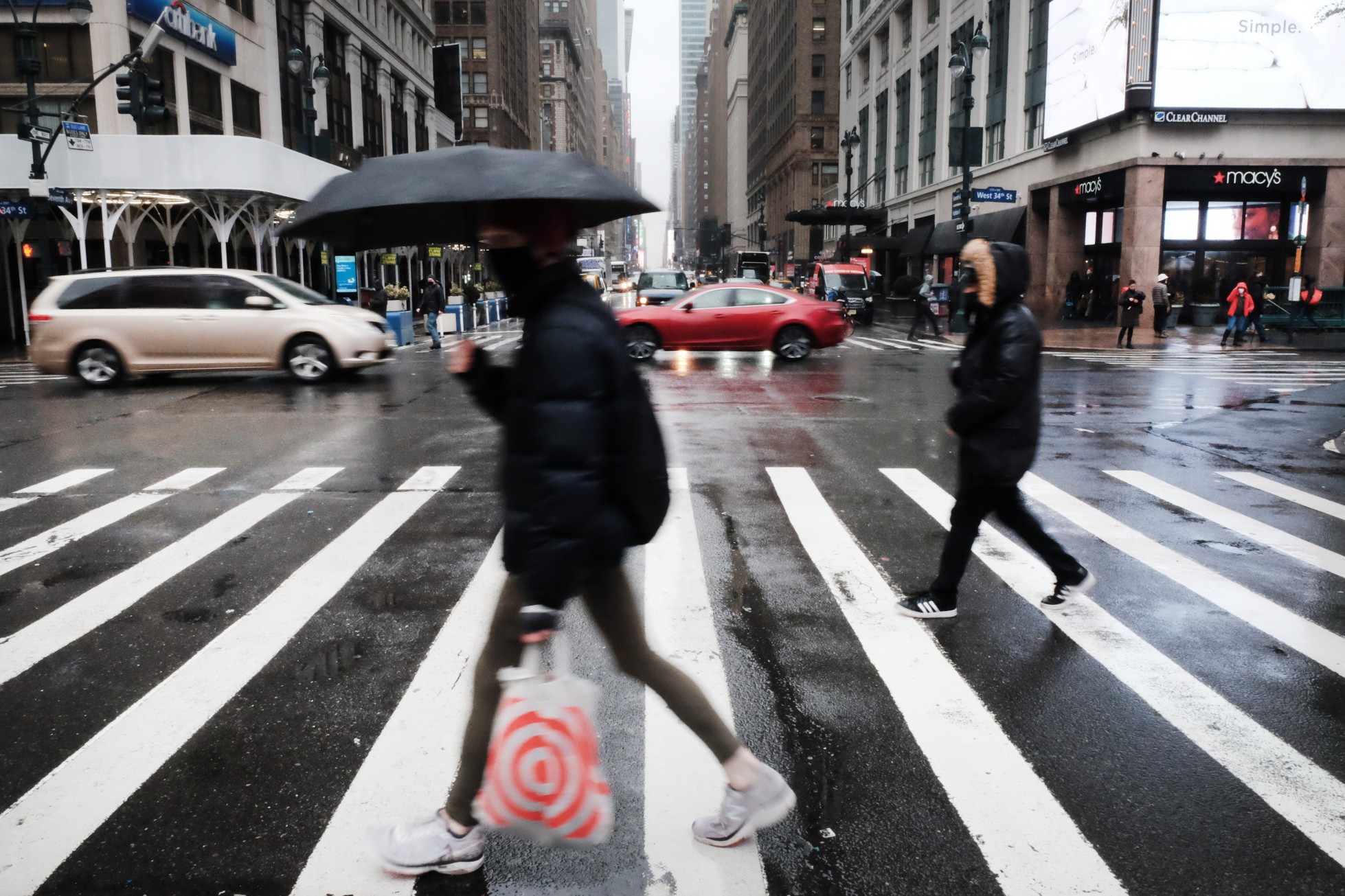
Heavy Rain, Flooding, and Chance of Severe Weather Staring Down the Southern U.S.
January 22, 2024
Posted: January 31, 2023 4:46 am





An active storm pattern currently brewing over the southern Plains will deliver the first chance of measurable snow for New York City by the end of the week. Here is the latest on what forecasters believe will transpire over the next few days for winter weather in this part of the U.S.
A long stretch of ice and snow expanding over 1,500 miles from Texas to the mid-Atlantic coast could make travel a pain for millions of Americans this week. The weather impacts may include snow for big metropolitan areas such as Washington, D.C. and New York City, ending what is already a record-breaking snow drought.
The precipitation will be made possible by a mass of Arctic air moving down into the north-central U.S. on the back end of an Alberta clipper storm. Although the Alberta clipper did not bring any snow to the Interstate 95 corridor, the cold air that followed it will set the stage for the chance of meaningful wintry precipitation in the days to come for the Eastern Seaboard.
The series of storms coming in from the southern Plains throughout the week will each provide their own host of impacts. The best chance of meaningful snow for the Northeast will happen toward the end of the week.
It is still too early to determine how far to the north the snow and ice may reach with each storm, however, early indicators are predicting that the areas most likely to see snow will be in a zone stretching from North Carolina into Virginia, West Virginia, Maryland, Delaware, and the southern tier of New Jersey.
Whether or not this finally breaks the snow drought for New York City, Philadelphia, and beyond is yet to be seen. However, it looks as if the late-week storm may provide the first solid chance at the snow for the season.
Although many cities in the Northeast have seen a few flakes fly this winter season, many of the most populated areas have not recorded any measurable snow. Forecasters define an official accumulation of snow that totals 0.1 of an inch or more.
How dry has it been? New York City’s Central Park has now gone over 328 straight days without any measurable snowfall. The record of 332 consecutive days is in danger of being broken if the snow does not come in by next week.
One record that fell this weekend was the date for the latest measurable snowfall of the season. Prior to Sunday, you had to go back to 1973 to find the date of the latest in the season that snow fell in the city. The winter of 1972 – 1973 was particularly dry with only 2.8 inches of snow across the entire season.
Philadelphia and Washington, D.C. are also dealing with their own snow droughts. Both cities have not seen measurable snow since March 12, 2022. Like New York City, the winter of 1972 – 1973 was also dry with no measurable snow recorded in Philadelphia and only 0.1 of an inch in Washington, D.C.
Forecasters will continue to fine tune their predictions as the week goes on. The current forecast has the possibility of snow, ice, or rain all on the table for these cities in the Northeast. It is possible that the cold air anchored over the northern part of the nation will force the storm track to the south. This would translate to cold temperatures for the Northeast but little action in the form of wintry precipitation.
There is also the possibility of another storm late in the week and into next weekend providing a chance of snow for New York City and beyond thanks to the burst of Arctic air. For instance, forecast highs in the Big Apple are predicted to plunge from the 50-degree mark last weekend to near freezing by next weekend. Although the temperatures will likely be cold enough to cause any precipitation to fall as snow rather than rain, it is still unknown how much moisture will arrive with this weather maker.
Even if the cities in the Northeast finally see their first measurable snowfall next week, they will still be well behind average for this point of the season. It will take a few blockbuster snow events to make up that deficit.
New York City typically sees nearly 30 inches of snow over the course of the entire winter with 10 of those inches coming in February alone. Washington, D.C. averages about 14 inches of snow each winter with 5 inches typically coming in February.
The long-range forecast is calling for a west-to-east jet stream pattern to take hold during the second week of February. This could translate to rising temperatures in many areas on the East Coast, creating a less supportive environment for snow. However, a colder pattern for the end of the month could mean a greater chance of snow.
Did you find this content useful? Feel free to bookmark or to post to your timeline for reference later.

January 21, 2024

January 19, 2024

January 18, 2024